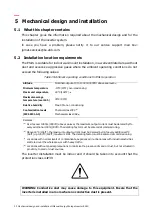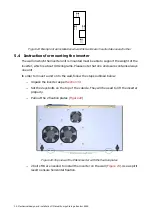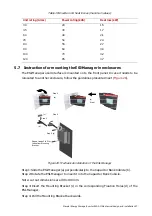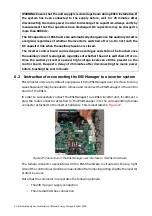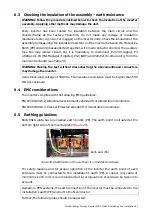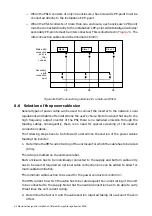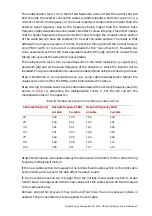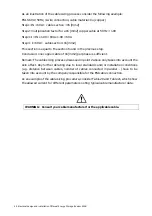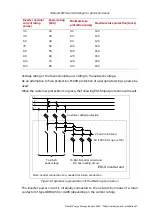
32 Mechanical design and installation
Manual Energy Storage Inverter ESI-S
—
5 Mechanical design and installation
5.1 What this chapter contains
This chapter gives the information required about the mechanical design and for the
installation of the inverter system.
In case you have a problem, please notify it to our service support mail box:
jumet.services@be.abb.com.
5.2 Installation location requirements
The ESI-S is suitable for indoor wall-mount installation, in a well-ventilated area without
dust and excessive aggressive gases where the ambient operating conditions do not
exceed the following values:
Table 15: Ambient operating conditions for ESI-S operation
Altitude
Nominal output at 0 to 1000m (3300ft) above sea level
(a)
Minimum temperature
-10°C (23°F), non-condensing
Maximum temperature
40°C (104°F)
(b)
Maximum average
temperature (over 24 h)
35°C (95°F)
Relative humidity
Max. 95% non-condensing
Contamination levels
(IEC 60721-3-3)
Chemical class 3C2
(c)
Mechanical class 3S2
(d)
Remarks:
(a)
At sites over 1000m (3300ft) above sea level, the maximum output current must be derated by 1%
every additional 100m (330ft). The derating factor must be entered at commissioning.
(b)
Above 40°C (104°F), the maximum output current must be derated by 3.5% every additional 1°C
(1.8°F) up to 50°C (122°F) maximum limit. The derating factor must be entered at commissioning.
(c)
Locations with normal levels of contaminants, experienced in urban areas with industrial activities
scattered over the whole area, or with heavy traffic.
(d)
Locations without special precautions to minimize the presence of sand or dust, but not situated in
proximity to sand or dust sources.
The inverter installation must be indoor and it should be taken into account that the
protection class is IP30.
WARNING: Conductive dust may cause damage to this equipment. Ensure that the
inverter is installed in a room where no conductive dust is present.















